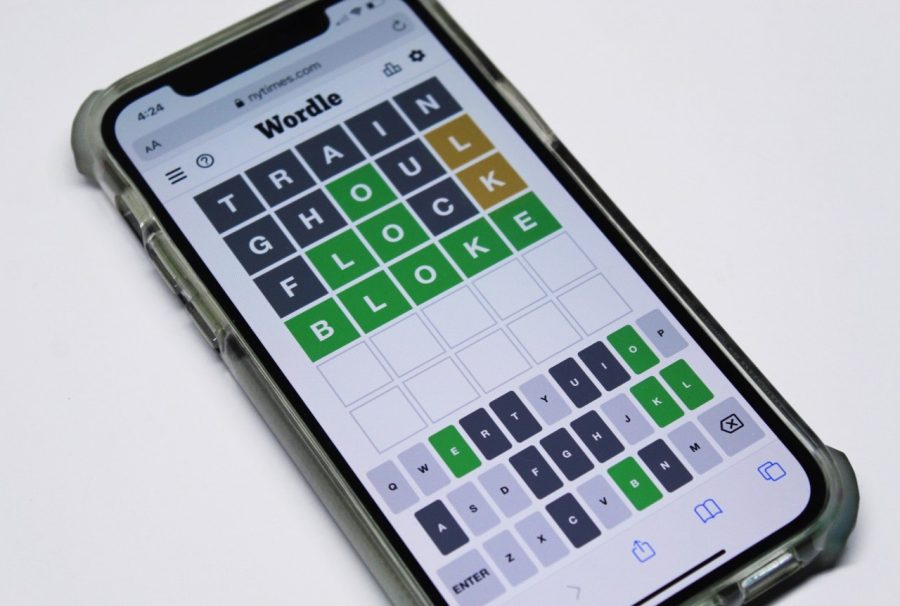Wordle captivates audiences with word guessing game
Each Wordle player has six tries to guess the game’s daily word. Color-coordinated clues help players along as they try to discover what it could be.
March 18, 2022
The new browser-based word guessing game, Wordle, has swept the world with its simple but addictive playstyle. Developed by Josh Wardle and titled as a play on his last name, each day a new five-letter word is provided for players to guess in no more than six tries.
The same word is given to all players universally, which provides a competitive edge that seems to have drawn in crowds. It can become a challenge between friends and family to see who can guess the word in the fewest attempts.
“I enjoy it a lot,” junior Tori Clinger said. “It’s become a thing with my friends now. Everyone is always saying, ‘don’t spoil it, don’t spoil it.’”
There is only one word each day, so once the word is guessed successfully, it’s time to wait until tomorrow to play again. This artificial scarcity likely contributes to the craze.
“When it’s only one word per day, it makes people come back every single day just to have that social connection with their peers,” junior Lily Jones said.
To play the game, a person enters any five-letter word, and once it’s entered, the game provides some helpful information about the guess. If a letter turns gray, then the word doesn’t contain it at all. If it’s yellow, then it’s located somewhere in the word, but is currently in the wrong place. If it turns green, then the letter not only is in the word, but is in its exact right position.
“The colors are a good feature because they give you good feedback and help the game along,” freshman Ben Olsen said. “It’s like a series of hints.”
The game was released to the public in October 2021, and on Nov. 1 had a total of just 90 players. Since then, it has grown to have hundreds of thousands each day. Originating as a game for Wardle’s partner, Palak Shah, it has grown greatly from its once small and family-based user base.
On Jan. 31, The New York Times announced purchasing the game from Wardle. Some fans have speculated that since the purchase, the game had gotten harder.
“I think it has gotten a little harder, because the New York Times seems to be using lots of rhyming words,” math teacher Wendy Bartlett said. “I do not think it is as fun when it is that way.”
Recent words such as “swill” might be more difficult to guess due to rhyming counterparts like spill, still, and skill. Players may run out of attempts due to repeatedly trying to guess the many possibilities for their last missing letter.
One of the fun quirks that have come along with Wordle are the ways people share how they found the day’s word. On Twitter, social media users use the solid square emojis to combine rows of black, yellow and green squares to show how they discovered the word without revealing what it is. These arrays are reminiscent of Wordle’s square-tile format, but of course, feature no letters and merely serve to display a person’s process to reaching a word.
“I don’t compete with my family as much as I share my results with them,” Bartlett said. “I mainly share the results with my daughter and her friends.”
Wordle provides fun for everyone easily shared in a communal, competitive setting, and has grown far beyond its humble origins. The game’s simple but compelling playstyle keeps users coming back to decipher their new word each day.
“It’s definitely super popular right now,” Clinger said. “It might fade out slowly someday, but for now it seems here to stay.”


